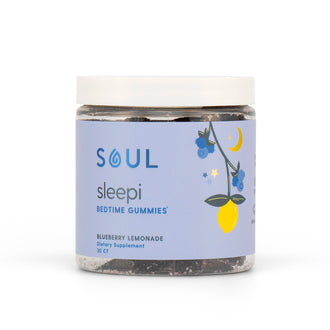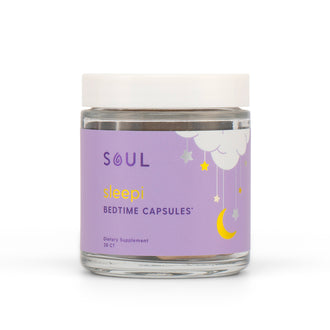Key Takeaways:
- Known as the precursor to major cannabinoids like THC and CBD, CBGA plays a crucial role in the biochemistry of the cannabis plant, influencing its therapeutic properties.
- Unlike THC, CBGA does not produce psychoactive effects, making it a subject of interest for its potential health benefits without cognitive impairment.
- Current studies focus on CBGA's potential anti-inflammatory, neuroprotective, and anti-cancer properties, highlighting its promising future in medical research and therapy development.
CBGA, or cannabigerolic acid, known as the "mother of all cannabinoids," is a key component in cannabis that leads to the creation of other cannabinoids like THC, CBD, and CBC through enzyme processes. It's unique because it doesn't have psychoactive effects, making it interesting for its potential health benefits without impacting the mind. Found in the plant's trichomes, CBGA levels vary based on genetics, environment, and the plant's growth stage. It's essential for those interested in cannabis's medicinal use to understand CBGA's role in the plant's chemistry and its derivatives' properties. This knowledge lays the groundwork for exploring CBGA's scientific significance and its potential in medical treatments, highlighting its importance in developing future cannabis-based therapies.
Unlock the Potential of Rare Cannabinoids with SOULStep into the fascinating world of holistic health with Soul. Discover the lesser-known cannabinoid, CBT, and how it could play a crucial role in fine-tuning your wellness routine.
|
The Science Behind CBGA
CBGA is a fundamental molecule in cannabis that starts the production of major cannabinoids like THC, CBD, and CBC, by combining olivetolic acid and geranyl pyrophosphate through plant enzymes. The genetics of the cannabis plant play a key role, as specific enzymes determine whether CBGA becomes THC, CBD, or CBC, affecting the strain's effects and therapeutic potential. Although research is still exploring CBGA's direct impact on the human endocannabinoid system, which regulates essential functions like pain, immunity, and mood, its significance lies in its ability to transform into other cannabinoids, potentially influencing health. This makes the study of CBGA crucial for understanding cannabis's chemistry and its future in medicine, offering insights into new treatments.
The Role of CBGA in the Cannabis Plant
Plant Growth and Development
In the early stages of growth, CBGA is synthesized in significant quantities. It acts as a building block for other cannabinoids, which are formed as the plant matures. The distribution and concentration of CBGA can have a direct impact on the plant's final cannabinoid profile, which in turn affects the therapeutic and psychoactive properties of cannabis.
Natural Defense Mechanism
Beyond its role in cannabinoid synthesis, CBGA has been found to serve as a defense mechanism for the cannabis plant. It possesses antimicrobial and insecticidal properties, helping protect the plant from pathogens and pests. This natural protective function highlights the evolutionary importance of CBGA in the survival and health of cannabis.
Influencing Cannabinoid Synthesis
The enzymatic pathways that convert CBGA into THC, CBD, and other cannabinoids are influenced by genetic factors and environmental conditions. By understanding these pathways, cultivators can manipulate growing conditions and breeding techniques to enhance the production of desired cannabinoids, tailoring cannabis strains to meet specific needs.
Potential Health Benefits of CBGA
Anti-inflammatory Properties
CBGA has shown potential as an anti-inflammatory agent, which could make it beneficial for conditions characterized by inflammation, such as arthritis and inflammatory bowel disease (IBD). By reducing inflammation, CBGA could help alleviate pain and other symptoms associated with these conditions.
Neuroprotective Effects
CBGA may also have neuroprotective properties, offering potential benefits for neurodegenerative diseases. Its ability to protect nerve cells and support brain health could open new avenues for treating or managing these conditions.
Antioxidant Properties
Like other cannabinoids, CBGA has antioxidant effects, which can help neutralize harmful free radicals in the body. This action could reduce oxidative stress, a factor involved in aging and many chronic diseases, offering protective benefits for overall health.

Metabolic Disorders
There is emerging evidence that CBGA could play a role in managing metabolic disorders, such as diabetes and obesity. Its potential to influence metabolism and fat storage suggests it could be a useful component in treatments aimed at regulating blood sugar levels and body weight.
CBGA’s Current Research Findings:
- Antibacterial and Antifungal Properties: Research has identified CBGA as having potent antibacterial and antifungal capabilities, suggesting it could be useful in treating infections resistant to traditional antibiotics.
- Appetite Stimulation: In studies focused on cannabinoid effects on appetite, CBGA has been observed to stimulate appetite, indicating potential applications for conditions leading to appetite loss, such as chemotherapy-induced nausea.
- Mood Regulation: Preliminary studies hint at CBGA's potential to influence serotonin levels, offering possibilities for addressing mood disorders, such as depression and anxiety.
Challenges in CBGA Research:
- Limited Clinical Trials: Despite promising preclinical studies, there is a lack of extensive clinical trials involving CBGA. This gap in research limits our understanding of its efficacy and safety in humans.
- Complexity of Cannabinoid Interactions: The interactions between CBGA and other cannabinoids, as well as its effects on the human body's endocannabinoid system, are complex and not fully understood. This complexity presents challenges in isolating the specific impacts of CBGA.
How CBGA Differs from Other Cannabinoids
Precursor Status
CBGA is often referred to as the "stem cell" of cannabinoids. It is the primary chemical precursor for the synthesis of most other cannabinoids, including THC, CBD, and CBC (cannabichromene). This foundational role in cannabinoid biosynthesis sets CBGA apart as a cornerstone of the cannabis plant's biochemistry.
Non-Psychoactive Nature
Unlike THC, which is known for its psychoactive effects, CBGA does not produce a "high." This non-psychoactive property makes CBGA particularly appealing for medical research and applications where the therapeutic benefits of cannabis are sought without impairing cognitive functions.
Therapeutic Potential
While CBD has gained fame for its wide range of therapeutic effects, including anti-anxiety and anti-inflammatory properties, CBGA is emerging as a compound of interest for its own unique potential health benefits. These include anti-inflammatory and neuroprotective properties, as discussed in previous sections.
Research and Development
The research landscape for CBGA is less developed compared to THC and CBD. However, this is rapidly changing as scientists and medical professionals recognize the untapped potential of CBGA. The compound's role as a precursor and its unique benefits are driving new studies and interest in its applications.

Regulatory Status
The legal and regulatory status of CBGA is generally less complicated than that of THC, which is subject to strict controls in many jurisdictions due to its psychoactive effects. However, as with other cannabinoids, the legal status of CBGA can vary by country and region, affecting research and commercial development.
Final Thoughts
Research into CBGA (cannabigerolic acid) is on the brink of unlocking new therapeutic uses, enhancing our understanding of cannabis biochemistry, and advancing personalized medicine. The future of CBGA research looks promising, focusing on genetic engineering to increase CBGA production, conducting more clinical trials to verify its health benefits, and exploring the "entourage effect" where CBGA works in harmony with other cannabis compounds for improved treatments. Personalized medicine will also play a significant role, aiming to tailor CBGA-based therapies to individual needs based on genetic and environmental factors. Alongside, evolving regulations will support research and application while ensuring safety. With its potential in a range of treatments, CBGA research is set to revolutionize our approach to cannabis-based therapies, making it an exciting area for scientists, healthcare professionals, and anyone interested in cannabinoid medicine.
Read also:
- THC Vs. THCA: Understanding The Effects And Potency Of Cannabis Compounds
- CBG: The Cannabinoid With Surprising Benefits
- The Emergence Of HHC In Cannabis Culture And Its Effects
Frequently Asked Questions
What exactly is CBGA in simple terms?
CBGA stands for cannabigerolic acid, a non-psychoactive cannabinoid found in the cannabis plant. It's known as the "mother of all cannabinoids" because it serves as a precursor for other cannabinoids like THC and CBD.
Can CBGA be found in all cannabis strains?
Yes, CBGA is present in most cannabis strains, though its concentration can vary widely depending on the plant's genetics, growth conditions, and the timing of harvest.
How is CBGA converted into other cannabinoids?
CBGA is converted into other cannabinoids like THC and CBD through natural enzymatic processes within the cannabis plant. These processes are influenced by the plant's genetics and environmental factors.
Does CBGA have any psychoactive effects?
No, CBGA is not psychoactive, meaning it does not produce the "high" associated with THC. This makes it of particular interest for its potential therapeutic benefits without impairing cognitive functions.
How does CBGA interact with the human body?
While research is ongoing, CBGA is believed to interact with the body's endocannabinoid system, which plays a role in regulating various physiological processes. However, its exact mechanisms of action are still being studied.
Are there any side effects associated with CBGA?
As of now, there is limited research on the side effects of CBGA. However, like with any compound, its safety and potential side effects are subjects of ongoing research, especially in high concentrations.
Can CBGA be used in isolation for therapeutic purposes?
While studies suggest potential therapeutic benefits of CBGA, more research is needed to understand its efficacy and safety as a standalone treatment. Currently, CBGA is being studied in conjunction with other cannabinoids to explore its full therapeutic potential.
How is CBGA extracted from the cannabis plant?
CBGA can be extracted using various methods, including CO2 extraction and ethanol extraction, which are commonly used to produce cannabinoid-rich oils and concentrates from cannabis.
Is CBGA legal to use and possess?
The legal status of CBGA can vary by country and region, largely depending on the legal status of cannabis and cannabinoids in general. It's important to check local laws regarding cannabinoid products.
What future research directions are scientists pursuing with CBGA?
Scientists are exploring several avenues, including CBGA's potential anti-inflammatory, neuroprotective, and anti-cancer properties, and its role in treating metabolic disorders. Future research aims to deepen our understanding of CBGA's therapeutic potential and mechanisms of action.
Sources:
- Cooray, R., Gupta, V., & Suphioglu, C. (2020). Current Aspects of the Endocannabinoid System and Targeted THC and CBD Phytocannabinoids as Potential Therapeutics for Parkinson’s and Alzheimer’s Diseases: a Review. Molecular Neurobiology, 57(11), 4878–4890. https://doi.org/10.1007/s12035-020-02054-6
- Kim, A., Kaufmann, C.N., Ko, R., Li, Z., & Han, B.H. (2019). Patterns of Medical Cannabis Use among Cancer Patients from a Medical Cannabis Dispensary in New York State. Journal of palliative medicine.
- Russo, E. B. (2011). Taming THC: potential cannabis synergy and phytocannabinoid-terpenoid entourage effects. British Journal of Pharmacology, 163(7), 1344–1364. https://doi.org/10.1111/j.1476-5381.2011.01238.x
- McDonald, J., Schleifer, L., Richards, J. B., & de Wit, H. (2003). Effects of THC on Behavioral Measures of Impulsivity in Humans. Neuropsychopharmacology, 28(7), 1356–1365. https://doi.org/10.1038/sj.npp.1300176
- Calabrese, E. J., & Rubio-Casillas, A. (2018). Biphasic effects of THC in memory and cognition. European Journal of Clinical Investigation, 48(5), e12920. https://doi.org/10.1111/eci.12920




